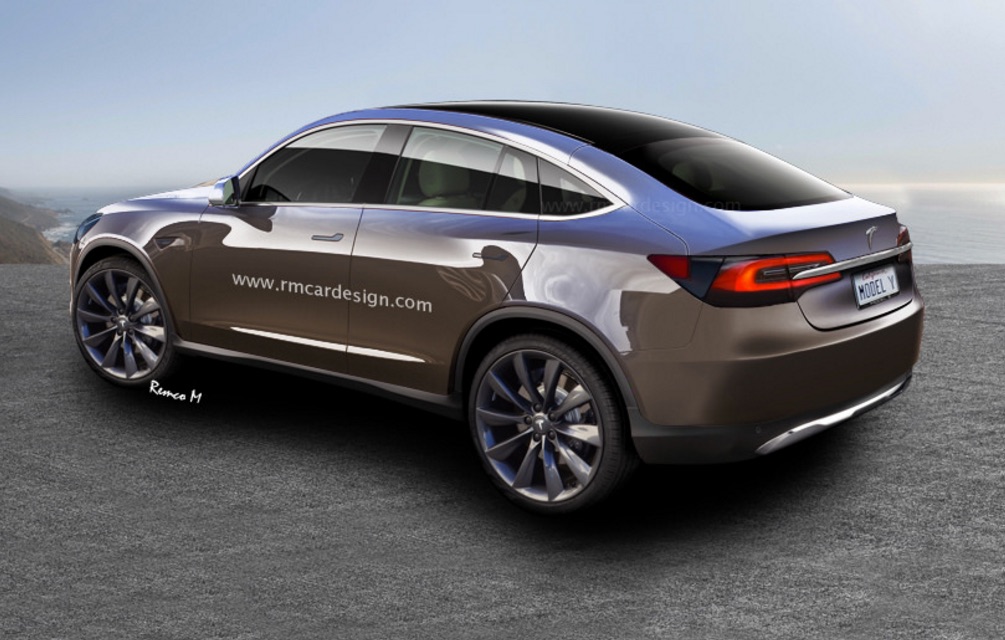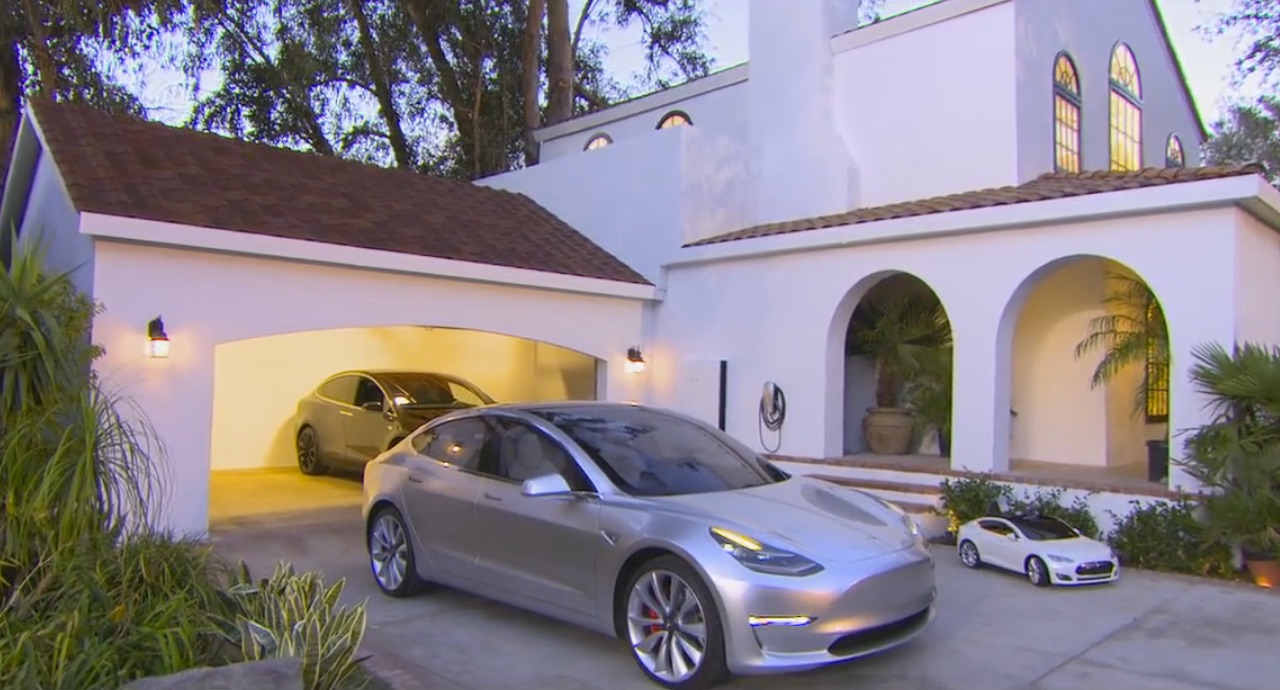News
What Tesla has in store for 2017: Model 3, Model Y, Solar Roof and more
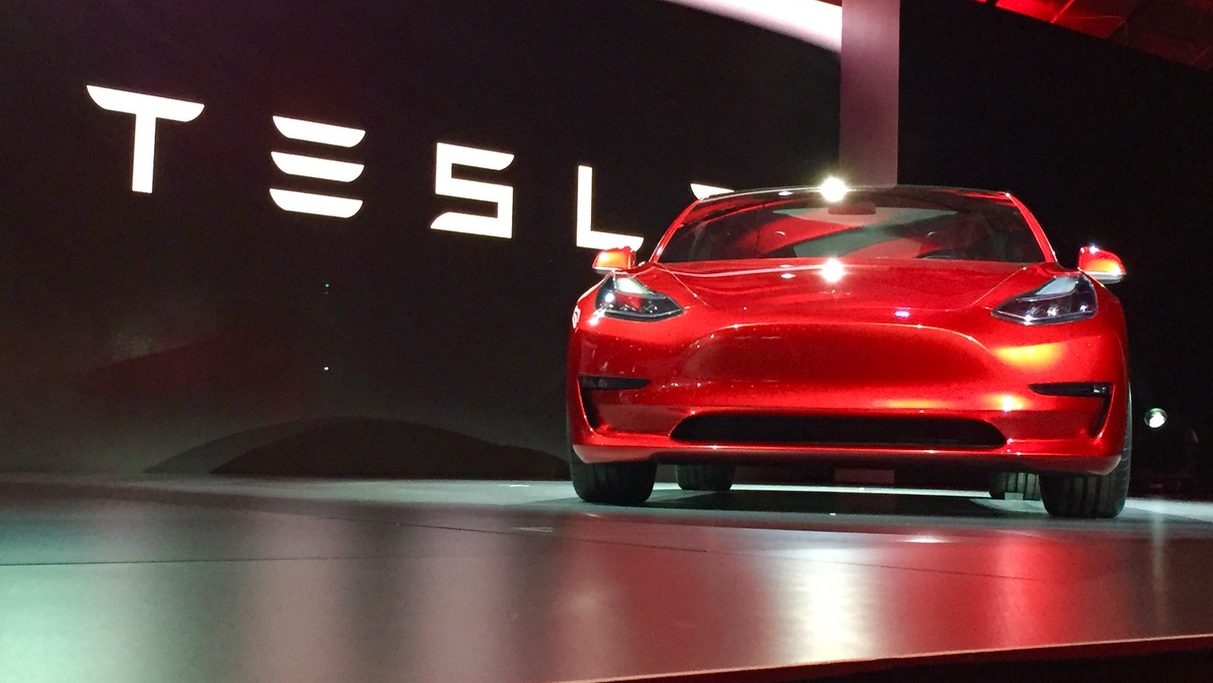
Tesla CEO Elon Musk revealed his vision of the future through the company’s Master Plan Part Deux on July 20, 2016. Filled with predictions about his complex and detailed plan to marry self-driving electric vehicles covering all segments, with solar rooftops and integrated battery storage units, 2017 should be the year when many of them begin to come into focus in a way the public can visualize.
Tesla Model 3 Deliveries
Arguably the most anticipated product on Tesla’s roadmap is its affordable mass market Model 3 mid-size sedan which will see first deliveries take place at the end of 2017. The car has been in “pencils down mode” since summer, meaning the final design has been locked in and the process of getting it ready for production has begun. Elon has hinted that plans call for a volume production date that would begin sometime near the summer of 2017.
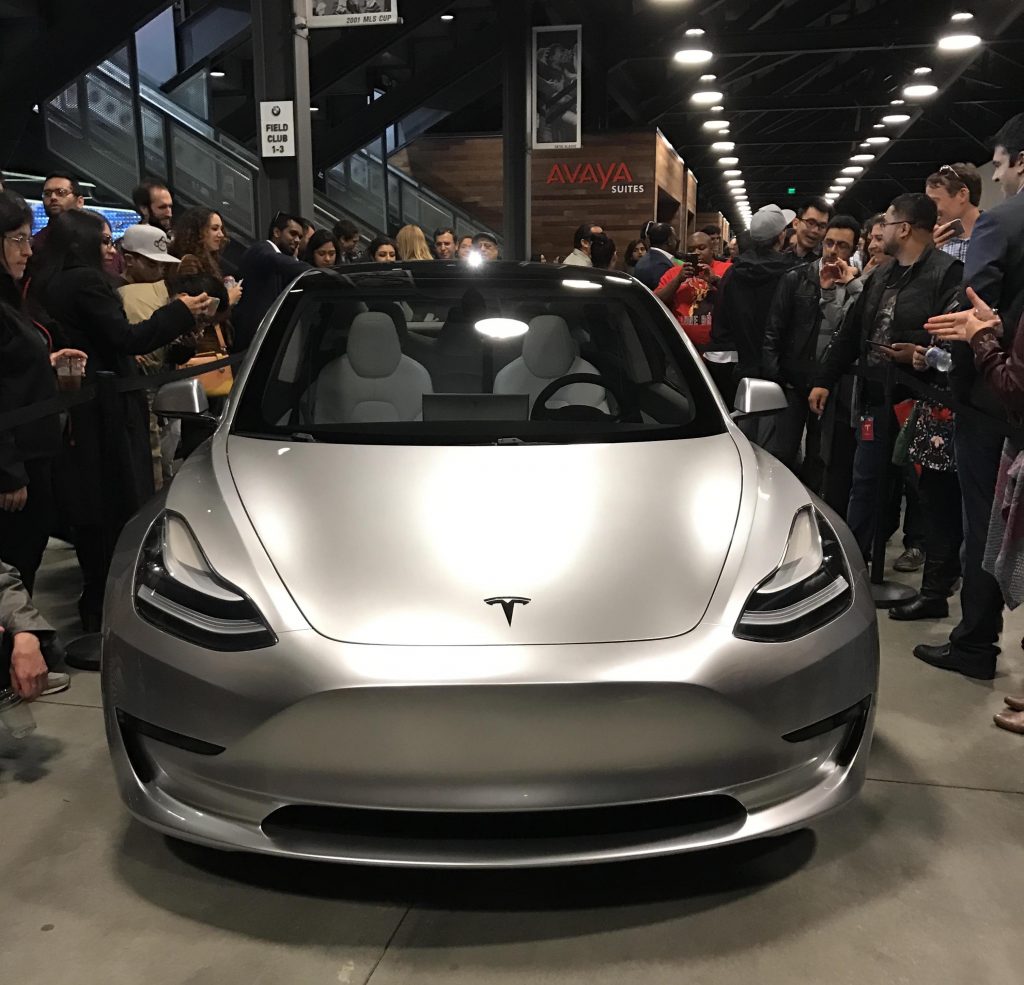
Silver Model 3 seen at Tesla’s employee-only Q3 celebration party in San Jose, CA
Goals should always exceed one’s grasp and Musk recognizes that starting volume production on Model 3 by the end of July is going to be next to impossible. He was chastened a bit by the roll out of the Model X, which began in September, 2015. A number of production glitches delayed full production of that car until well into the second quarter of 2016.
That experience tempered Elon’s irrepressible optimism with a dose of real world experience. Even assuming production did begin next summer, it would result in relatively few cars being produced. Those would get into the hands of customers living near the factory in Fremont, California so that any post-production issues can be addressed quickly and efficiently. The lessons learned would then be used to improve the quality of the cars to come.
Machines That Builds Machines, Come to Life
A main area of focus for Musk and Tesla’s production arm is devising ways to reap significant benefits from a total rethinking of the manufacturing process by “building the machine that builds the machine”. Having recently acquired a leading engineering firm in Germany focused on building advanced automation tools, Tesla believes that a properly designed factory could operate at 5 to 10 times the speed of today’s production facilities.
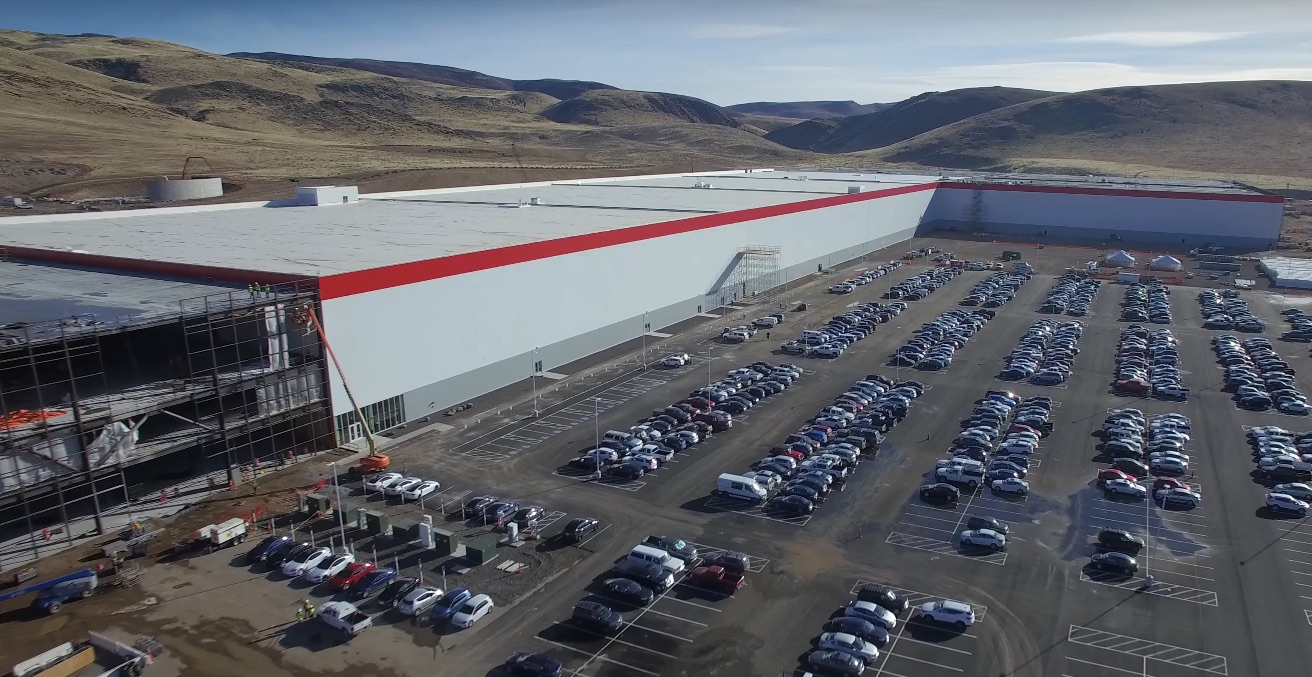
Drone video of Tesla’s Gigafactory shows the battery factory more than doubling in size
“Tesla engineering has transitioned to focus heavily on designing the machine that makes the machine — turning the factory itself into a product. A first principles physics analysis of automotive production suggests that somewhere between a 5 to 10 fold improvement is achievable by version 3 on a roughly 2 year iteration cycle.”, said Musk at the Tesla Gigafactory Grand Opening celebration.
Plans to nearly double the size of Tesla’s Fremont, Calif. factory were recently approved by the city. Tesla plans to build as many as 500,000 cars a year, most of them Model 3s, by the end of 2018.
Tesla Model Y Compact SUV and Tesla Pickup Truck Unveiling
An electric compact SUV based on the Model 3 chassis, dubbed Model Y, will round out Tesla’s S-E-X-Y range of vehicles. That, along with a Tesla pickup and a Tesla ‘minibus’, will fulfill the major automotive segments the Silicon Valley automaker and energy company aims to cover with its upcoming fleet of electric cars. Expect prototypes to be unveiled sometime in 2017
“In addition to consumer vehicles, there are two other types of electric vehicle needed: heavy-duty trucks and high passenger-density urban transport. Both are in the early stages of development at Tesla and should be ready for unveiling next year.”, reads Tesla’s blog post.
Musk also says Tesla is already working on a semi-truck for hauling. Heavy trucks account for about 50% of the emissions from transportation. With Musk’s focus on creating a sustainable society, trucks will need to be big part of the picture. Both the pickup truck and the Tesla Semi are expected to be revealed in concept form during the coming year.Model Y (compact SUV) off Model 3 chassis. Tesla Bus/Minibus/Spacebus off Model X.
— Elon Musk (@elonmusk) July 31, 2016
In addition, Tesla is thinking about creating a self driving minibus that could transport up to 10 passengers, according to Musk’s Master Plan Part Deux. It would be based on the Model X chassis. Passengers could summon the bus to their location and it would deliver them to their destination with little or no walking required — something traditional public transportation vehicles cannot do.
Tesla job openings reveal that developments for future vehicles are already being planned for.
Roll Out of Autopilot 2.0 and Self-Driving Features
2017 is also the year when Tesla’s Enhanced Autopilot should become fully operational. All cars produced after October 19 are equipped with the hardware 2 package of cameras, radar, and advanced ultrasound sensors that will allow them to operate without human input. All that remains to be done is accumulate enough human logged driving miles to flush out the confidence level for the company’s self-driving algorithms.
Tesla has already accumulated more than 1.2 billion miles of driving history and is adding 3 million more miles every day. Elon believes it will require a total of 6 billion miles of driving experience before autonomous driving is reliable enough to convince regulators to allow self-driving cars to be allowed on public roads. He is also aware that approval will vary widely from jurisdiction to jurisdiction, both within the United States and in other countries.
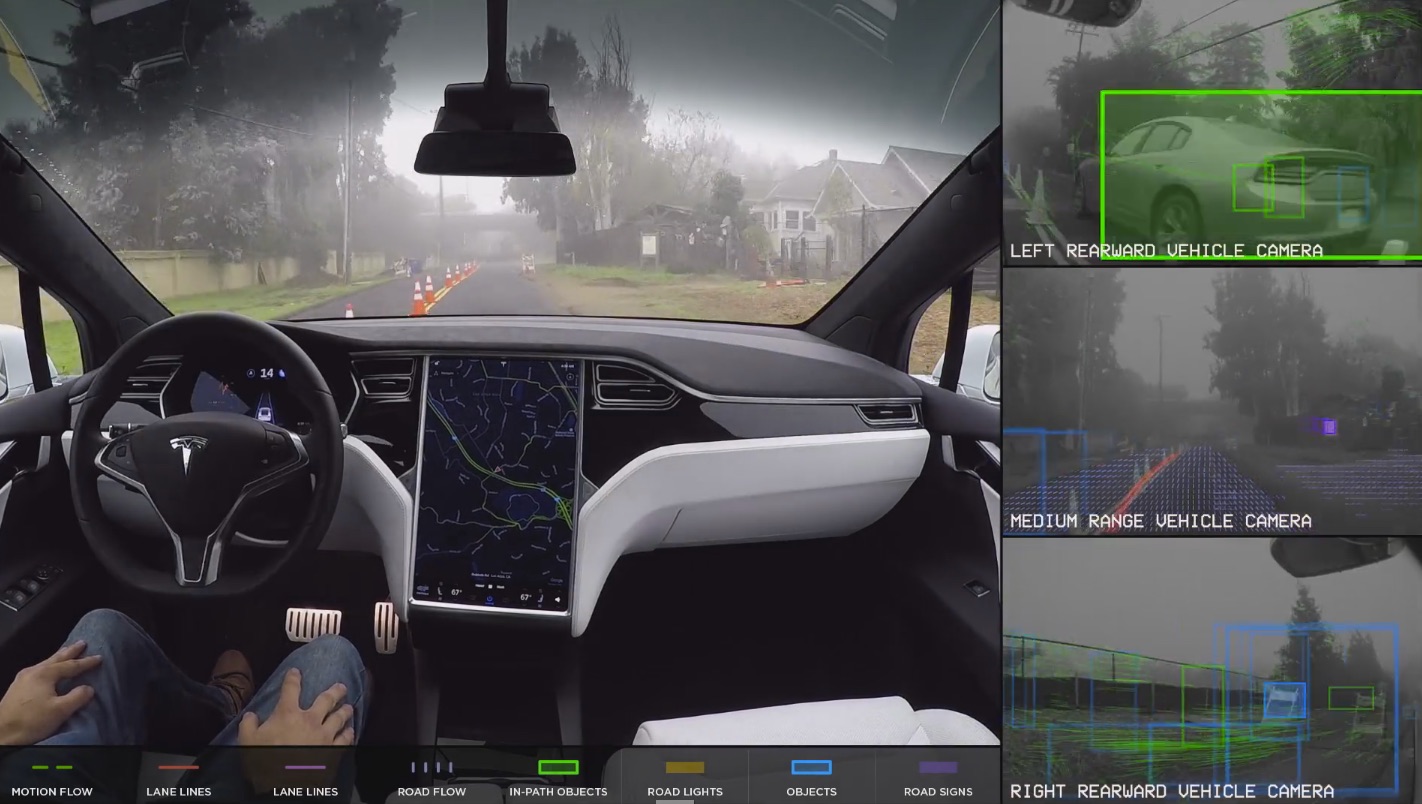
Tesla demonstrates the capabilities of a Full Self-Driving Model X
Musk plans to showcase a fully autonomous trip from Los Angeles to New York by the end of 2017. According to Musk, the cross country journey in a Full Self-Driving Tesla would take place “without the need for a single touch” from a human driver, including recharging the car’s battery.
“Our goal is, we’ll to be able to do a demonstration drive of full autonomy all the way from LA to New York,” According to Musk, the trip would be “from home in LA, to dropping you off in Times Square, and then the car will go park itself.”
Tesla Will Begin Solar Roof Sales
Now that SolarCity has officially become part of Tesla Motors, the Solar Roof products introduced in October will become available next year to customers throughout the US. Tesla is revamping its retail stores to include information about its solar products and the Powerwall 2, its latest residential energy storage product. Musk envisions a seamless, pain-free process that will allow solar customers to order a Solar Roof and all the details are handled completely by Tesla.
Combining energy production with local energy storage will permit more homeowners to reduce their reliance on the local utility company, which will insulate them against future rate hikes. It will also mean fewer carbon emissions from generating electricity, reinforcing Musk’s goal of a sustainable future.
The Solar Roof will be offered in four styles and the anticipated to go on sale during the summer of 2017, starting with the most popular style first. Other styles will become available at the rate of one additional style every three months.
News
Tesla launches in India with Model Y, showing pricing will be biggest challenge
Tesla finally got its Model Y launched in India, but it will surely come at a price for consumers.

Tesla has officially launched in India following years of delays, as it brought its Model Y to the market for the first time on Tuesday.
However, the launch showed that pricing is going to be its biggest challenge. The all-electric Model Y is priced significantly higher than in other major markets in which Tesla operates.
On Tuesday, Tesla’s Model Y went up for sale for 59,89,000 rupees for the Rear-Wheel Drive configuration, while the Long Range Rear-Wheel Drive was priced at 67,89,000.
This equates to $69,686 for the RWD and $78,994 for the Long Range RWD, a substantial markup compared to what these cars sell for in the United States.
🚨 Here’s the difference in price for the Tesla Model Y in the U.S. compared to India.
🚨 59,89,000 is $69,686
🚨 67,89,000 is $78,994 pic.twitter.com/7EUzyWLcED— TESLARATI (@Teslarati) July 15, 2025
Deliveries are currently scheduled for the third quarter, and it will be interesting to see how many units they can sell in the market at this price point.
The price includes tariffs and additional fees that are applied by the Indian government, which has aimed to work with foreign automakers to come to terms on lower duties that increase vehicle cost.
Tesla Model Y seen testing under wraps in India ahead of launch
There is a chance that these duties will be removed, which would create a more stable and affordable pricing model for Tesla in the future. President Trump and Indian Prime Minister Narendra Modi continue to iron out those details.
Maharashtra Chief Minister Devendra Fadnavis said to reporters outside the company’s new outlet in the region (via Reuters):
“In the future, we wish to see R&D and manufacturing done in India, and I am sure at an appropriate stage, Tesla will think about it.”
It appears to be eerily similar to the same “game of chicken” Tesla played with Indian government officials for the past few years. Tesla has always wanted to enter India, but was unable to do so due to these import duties.
India wanted Tesla to commit to building a Gigafactory in the country, but Tesla wanted to test demand first.
It seems this could be that demand test, and the duties are going to have a significant impact on what demand will actually be.
Elon Musk
Tesla ups Robotaxi fare price to another comical figure with service area expansion
Tesla upped its fare price for a Robotaxi ride from $4.20 to, you guessed it, $6.90.

Tesla has upped its fare price for the Robotaxi platform in Austin for the first time since its launch on June 22. The increase came on the same day that Tesla expanded its Service Area for the Robotaxi ride-hailing service, offering rides to a broader portion of the city.
The price is up from $4.20, a figure that many Tesla fans will find amusing, considering CEO Elon Musk has used that number, as well as ’69,’ as a light-hearted attempt at comedy over the past several years.
Musk confirmed yesterday that Tesla would up the price per ride from that $4.20 point to $6.90. Are we really surprised that is what the company decided on, as the expansion of the Service Area also took effect on Monday?
But the price is now a princely $6.90, as foretold in the prophecy 😂
— Elon Musk (@elonmusk) July 14, 2025
The Service Area expansion was also somewhat of a joke too, especially considering the shape of the new region where the driverless service can travel.
I wrote yesterday about how it might be funny, but in reality, it is more of a message to competitors that Tesla can expand in Austin wherever it wants at any time.
Tesla’s Robotaxi expansion wasn’t a joke, it was a warning to competitors
It was only a matter of time before the Robotaxi platform would subject riders to a higher, flat fee for a ride. This is primarily due to two reasons: the size of the access program is increasing, and, more importantly, the service area is expanding in size.
Tesla has already surpassed Waymo in Austin in terms of its service area, which is roughly five square miles larger. Waymo launched driverless rides to the public back in March, while Tesla’s just became available to a small group in June. Tesla has already expanded it, allowing new members to hail a ride from a driverless Model Y nearly every day.
The Robotaxi app is also becoming more robust as Tesla is adding new features with updates. It has already been updated on two occasions, with the most recent improvements being rolled out yesterday.
Tesla updates Robotaxi app with several big changes, including wider service area
News
Tesla Model Y and Model 3 dominate U.S. EV sales despite headwinds
Tesla’s two mainstream vehicles accounted for more than 40% of all EVs sold in the United States in Q2 2025.

Tesla’s Model Y and Model 3 remained the top-selling electric vehicles in the U.S. during Q2 2025, even as the broader EV market dipped 6.3% year-over-year.
The Model Y logged 86,120 units sold, followed by the Model 3 at 48,803. This means that Tesla’s two mainstream vehicles accounted for 43% of all EVs sold in the United States during the second quarter, as per data from Cox Automotive.
Tesla leads amid tax credit uncertainty and a tough first half
Tesla’s performance in Q2 is notable given a series of hurdles earlier in the year. The company temporarily paused Model Y deliveries in Q1 as it transitioned to the production of the new Model Y, and its retail presence was hit by protests and vandalism tied to political backlash against CEO Elon Musk. The fallout carried into Q2, yet Tesla’s two mass-market vehicles still outsold the next eight EVs combined.
Q2 marked just the third-ever YoY decline in quarterly EV sales, totaling 310,839 units. Electric vehicle sales, however, were still up 4.9% from Q1 and reached a record 607,089 units in the first half of 2025. Analysts also expect a surge in Q3 as buyers rush to qualify for federal EV tax credits before they expire on October 1, Cox Automotive noted in a post.
Legacy rivals gain ground, but Tesla holds its commanding lead
General Motors more than doubled its EV volume in the first half of 2025, selling over 78,000 units and boosting its EV market share to 12.9%. Chevrolet became the second-best-selling EV brand, pushing GM past Ford and Hyundai. Tesla, however, still retained a commanding 44.7% electric vehicle market share despite a 12% drop in in Q2 revenue, following a decline of almost 9% in Q1.
Incentives reached record highs in Q2, averaging 14.8% of transaction prices, roughly $8,500 per vehicle. As government support winds down, the used EV market is also gaining momentum, with over 100,000 used EVs sold in Q2.
Q2 2025 Kelley Blue Book EV Sales Report by Simon Alvarez on Scribd
-

 News3 days ago
News3 days agoTesla debuts hands-free Grok AI with update 2025.26: What you need to know
-

 Elon Musk1 week ago
Elon Musk1 week agoElon Musk confirms Grok 4 launch on July 9 with livestream event
-

 Elon Musk6 days ago
Elon Musk6 days agoxAI launches Grok 4 with new $300/month SuperGrok Heavy subscription
-

 News2 weeks ago
News2 weeks agoTesla Model 3 ranks as the safest new car in Europe for 2025, per Euro NCAP tests
-

 Elon Musk2 weeks ago
Elon Musk2 weeks agoxAI’s Memphis data center receives air permit despite community criticism
-

 News5 days ago
News5 days agoTesla begins Robotaxi certification push in Arizona: report
-

 Elon Musk2 weeks ago
Elon Musk2 weeks agoTesla reveals it is using AI to make factories more sustainable: here’s how
-

 Elon Musk2 weeks ago
Elon Musk2 weeks agoTesla scrambles after Musk sidekick exit, CEO takes over sales

